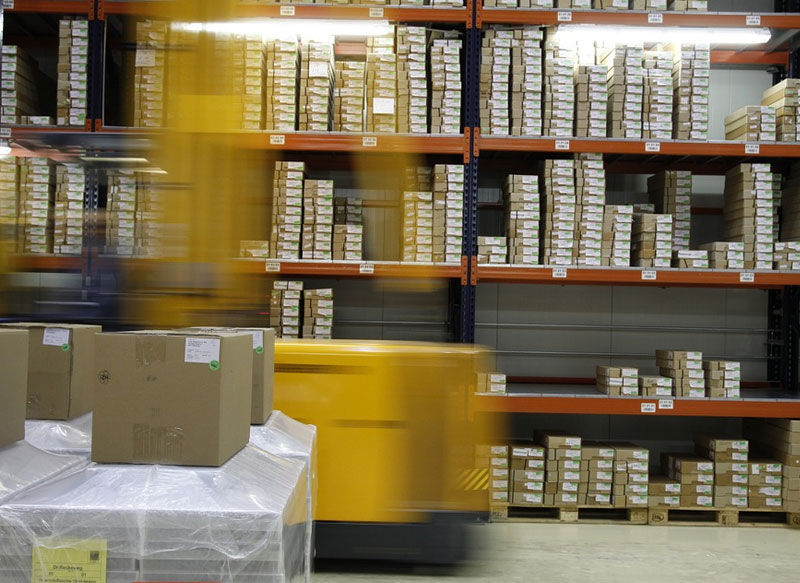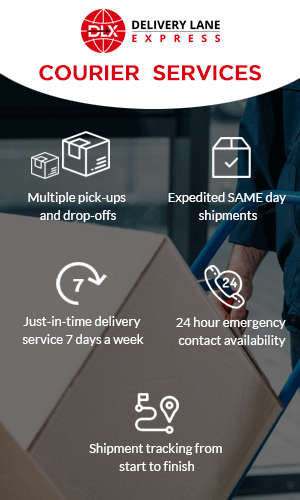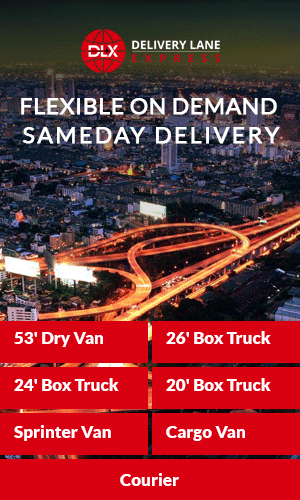
BLOG

Cross-docking services revolutionize traditional supply chain methods by optimizing the flow of goods from suppliers to customers. In this logistical approach, incoming shipments are swiftly unloaded from transportation vehicles, such as trucks or trains, and then promptly transferred to outbound vehicles for direct delivery to their final destinations. Unlike traditional warehousing methods that involve storing goods for extended periods, cross-docking minimizes storage time and eliminates the need for storage facilities, thereby reducing handling costs and streamlining the distribution process.
The primary advantage of cross-docking lies in its ability to enhance supply chain efficiency. By bypassing the need for intermediate storage, businesses can significantly reduce lead times and respond more swiftly to customer demands. This agility is particularly valuable in industries characterized by rapidly changing consumer preferences and short product life cycles.
Cross-docking services are a logistical strategy used in supply chain management to streamline the movement of goods from suppliers to customers. Unlike traditional warehousing methods that involve storing goods for extended periods, Cross-docking services involves unloading incoming shipments from transportation vehicles, such as trucks or trains, and immediately transferring them to outbound vehicles for direct delivery to their final destinations.
The process of Cross-docking services typically occurs without the need for storing the goods in a warehouse. Instead, goods are quickly sorted and loaded onto outbound vehicles, minimizing storage time and handling costs. This rapid transfer of goods enables businesses to accelerate the distribution process, reduce lead times, and respond more efficiently to customer demands.
Cross-docking services offer several advantages to businesses. Firstly, they improve supply chain efficiency by reducing the time it takes for goods to reach their destination. This agility is particularly valuable in industries with fast-changing consumer preferences and short product life cycles.
Secondly, Cross-docking services facilitates more efficient inventory management. By minimizing the need for intermediate storage, companies can maintain lower inventory levels while still ensuring timely deliveries. This helps reduce holding costs and minimizes the risk of overstocking or obsolete inventory.
Additionally, Cross-docking services enables businesses to consolidate shipments, leading to economies of scale. By combining smaller shipments into larger, more efficient loads, companies can optimize transportation costs and enhance overall logistics operations.
In summary, cross-docking services play a crucial role in modern supply chain management by optimizing the flow of goods and improving efficiency. By minimizing storage times, optimizing inventory management, and consolidating shipments, businesses can enhance their competitiveness and meet the demands of today's dynamic marketplace.
These key components form the foundation of effective cross docking services, enabling businesses to achieve faster throughput, reduced inventory holding costs, and improved supply chain agility.
1. Goods arrive at the Cross Docking Services facility either directly from suppliers or via transportation carriers.
2. Upon arrival, incoming shipments are quickly unloaded from trucks or containers.
3. Products are inspected for accuracy, quality, and quantity to ensure they meet the required standards.
1. Cross Docking Services Received items are sorted based on predetermined criteria such as destination, customer orders, or product type.
2. Similar products from different suppliers are consolidated into larger batches to optimize outbound shipments.
3. Barcode or RFID technology may be used to label and track individual items throughout the sorting process.
1. Cross Docking Services Once sorted and consolidated, products are immediately loaded onto outbound trucks or containers designated for specific destinations.
2. Cross Docking Services staff efficiently organize and arrange items on outbound vehicles to maximize space utilization and ensure timely delivery.
3. Shipping documents, including packing lists, bills of lading, and shipping labels, are prepared and attached to outbound shipments.
1. Throughout the Cross Docking Services process, warehouse management systems (WMS) or other tracking software provide real-time visibility into inventory levels, order status, and shipment progress.
2. Managers and supervisors monitor operations closely to identify any bottlenecks, delays, or quality issues and take corrective actions as needed.
3. Communication channels are maintained with transportation carriers, suppliers, and customers to coordinate schedules, address any issues, and provide updates on shipment status.
1. Cross Docking Services facilities regularly evaluate performance metrics such as throughput rates, on-time delivery, and accuracy to identify areas for improvement.
2. Feedback from employees, customers, and supply chain partners is collected and analyzed to implement process enhancements and optimize efficiency.
3. Continuous training and development initiatives are conducted to ensure staff remain skilled and knowledgeable in Cross Docking Services operations.
By following these steps, Cross Docking Services facilities can streamline the flow of goods through the supply chain, reduce inventory holding costs, minimize transit times, and enhance overall operational efficiency.
Cross docking services is a flexible operation arrangement between businesses, firms and warehousing facilities which involves multiple numbers of suppliers arriving at a pre fixed designated time at the handling facility and here the inventory receipts are sorted and consolidated into outbound trailers through which they go for direct delivery to the customer.
The main purpose of Cross docking services is to reduce and avoid material storage and handling time.
Cross docking services helps in the quick consolidation of products received. This saves on time, money and resources. Similar products going to the same location are consolidated together and then are dispatched to the end customer location.
Thus with the help of consolidation a lot of time is saved and there is quick and fast delivery of products for the customers and quick payments for the businesses and the firms. Thus this turns out to be a Win-Win proposition for all the parties involved.
Also consolidation increases the efficiency in sorting the products and thus the customers and businesses are both happy as customer gets the product on time and the business is able to supply more product and increase its profits.
Inventory damage is a fact and is very difficult to avoid. This is more so because there are large quantities of goods and Cross-docking services which are transported from one location to another. Also there are chances of accidents and mishaps which can damage the goods and services and thus through Cross docking services the storage time is minimum and thus the damage that might happen also gets reduced.
Cross docking services is a very efficient way of decreasing inventory damage as inventory damage can happen due to pests or through accidents and thus as there is minimum storage in Cross-docking services thus the chances of damage are reduced considerably.
If the products are stored in the warehouse then in that case there is a lot of labor which is required to operate the machines like the forklift and other machines and thus labor requirements increases with each action.
In Cross docking services the products arrive and then they are sorted and then they are shipped in lots to the destination. This considerably reduces the need for labor and thus the handling cost and chances of damage also go down.
Also Cross docking services reduces the inventory requirements for the businesses who take warehousing services. This is so as the products reach the Cross-docking services and then are organized and segregated into slots and then are dispatched to the desired location quick and fast.
Thus there is minimum need for inventory and also the damage chances are also minimal.
With Cross docking services there can be more and faster business for the firm and businesses and thus this turns out to be a Win-Win proposition for all the parties involved.
More deliveries can happen quicker and faster and thus the customer gets his product on time and also the business gets its payments on time too.
With more frequent deliveries there are more transactions which happen and take place and this is good for all parties involved.
Also due to Cross docking services the delivery time is considerably reduced and the customer receives the product in time. This leads to customer satisfaction and delight and thus the customer is happy and does repeat purchases. Due to this the firms business goes up and thus all the parties’ party to the supply chain also benefit.
The faster the product flow the better it is for the business. Cross docking services helps in sorting all the goods into lots and then they are dispatched to the destination in lots. This reduces time and effort and also saves time and money. Thus Cross docking services is the best and most effective way of transporting good from one destination to multiple destination in lots.
Cross docking services is effective and efficient and helps all the parties involved in the supply chain and thus all businesses should make use of Cross docking services as it reduces costs and leads to customer delight and satisfaction.
Through Cross docking services the products are sorted into lots and then are dispatched to the final destination. This fastens up the supply chain process and the customer gets the product on or before time. Thus the supplier also gets his payment on time and thus all parties involved are benefitted. Thus Cross docking services makes complete business sense as if transactions are fast and quick and also if the customer is satisfied then the business of the firm will grow and so will the shipments and thus the Cross docking services facility will also get more business and finally the customer will receive a good quality product delivered on time.
Thus Cross docking services is a very efficient and effective way of transporting and delivering product from one location to another and it is fast quick and also cheaper.
Also the inventory damage is almost zero and there are no damages which occur as the products don’t need to be stored and are sorted in lots and quickly dispatched to the final destination. This also reduces the risk of accidents and loss of any kind.
Moreover labor cost and requirements also becomes minimum and thus this helps in reducing cost and makes it a win-win proposition for all the parties involved.
The speed of deliveries also increases and this leads to customer delight and satisfaction and thus the customer goes for repeat orders and thus the business of the firm and the cross dock also increases and improves.
Also there is efficient and effective consolidation of products and thus more and more products can be delivered fast and quick.
Overall Cross docking is better than going for warehouse storage facility as it is cheaper and there is less chance of damage and also there are faster deliveries and more business for all.
Proximity to transportation hubs : The location of Cross Docking Services facilities relative to ports, airports, and major highways impacts transportation efficiency.
Carrier partnerships : Cross Docking Services Collaborating with reliable transportation carriers ensures timely pickup and delivery of goods, minimizing transit times.
Routing optimization : Efficient route planning and scheduling optimize transportation routes, Cross Docking Services reducing fuel consumption and transportation costs.
Accurate demand forecasting : Cross Docking Services Predicting customer demand accurately enables efficient inventory planning and reduces the risk of overstocking or stockouts.
Real-time inventory visibility : Cross Docking Services Access to real-time inventory data allows for better coordination of inbound and outbound shipments, reducing the likelihood of bottlenecks.
SKU profiling : Cross Docking Services Categorizing products based on demand patterns and handling requirements facilitates efficient sorting and consolidation processes.
Information sharing : Seamless communication and data exchange among supply chain partners enhance Cross Docking Services visibility and enable proactive decision-making.
Track and trace capabilities : Utilizing tracking technologies such as RFID and barcode Cross Docking Services scanning provides real-time visibility into the movement of goods throughout the supply chain.
Performance metrics : Cross Docking Services Monitoring key performance indicators (KPIs) such as throughput rates, order accuracy, and on-time delivery enables continuous improvement and optimization of cross docking operations, Cross Docking Services.
Docking bay capacity : Cross Docking Services Sufficient loading and unloading bays accommodate incoming and outgoing shipments simultaneously, minimizing wait times and congestion.
Layout efficiency : Cross Docking Services Streamlined facility layout and optimized workflow minimize the distance traveled by goods within the facility, improving operational efficiency.
Equipment availability : Adequate availability of material handling Cross Docking Services equipment such as forklifts, pallet jacks, and conveyor systems facilitates efficient movement of goods.
Skilled labor : Well-trained employees proficient in Cross Docking Services processes and equipment operation ensure smooth and efficient operations.
Cross-functional collaboration : Cross Docking Services Collaboration between different departments, including receiving, sorting, transportation, and customer service, fosters a cohesive and efficient work environment.
Continuous improvement culture : Encouraging employee feedback and implementing process Cross Docking Services improvements enhance operational efficiency and effectiveness over time.
By addressing these factors, cross docking services can optimize efficiency, reduce costs, and enhance customer satisfaction, ultimately contributing to the overall success of the supply chain.
1. Reduced Inventory Costs : Cross docking services eliminates the need for storing inventory, reducing associated costs such as storage space, maintenance, and inventory management.
2. Faster Delivery : By bypassing storage, cross docking services speeds up the transit time of goods from suppliers to customers, leading to quicker delivery.
3. Improved Supply Chain Efficiency : Cross docking services Streamlining the process of receiving, sorting, and shipping goods enhances overall supply chain efficiency.
4. Lower Transportation Costs : Cross docking services optimizes transportation routes and reduces the number of touches, resulting in lower transportation expenses.
5. Enhanced Product Freshness : Cross docking services Perishable goods can be quickly transferred, ensuring fresher products reach the market.
6. Increased Flexibility : Cross docking services allows for more agile responses to changes in demand, market conditions, or disruptions in the supply chain.
7. Better Utilization of Resources : By reducing idle time and optimizing resource allocation, cross docking services maximizes the utilization of trucks, labor, and equipment.
8. Minimized Risk of Obsolescence : Cross docking services Since goods spend less time in inventory, there's a reduced risk of products becoming obsolete or outdated.
9. Environmental Benefits : Cross docking services Optimized transportation routes and reduced inventory holding contribute to lower carbon emissions and environmental impact.
10. Competitive Advantage : Cross docking services Faster delivery times, reduced costs, and improved efficiency can provide businesses with a competitive edge in the market.
1. Complexity in Coordination : Cross docking services Coordinating inbound and outbound shipments, as well as managing schedules, can be challenging and prone to errors.
2. Dependency on Transportation : Cross docking services relies heavily on efficient transportation systems, making the supply chain vulnerable to disruptions in transportation.
3. Risk of Errors : The fast-paced nature of cross docking services operations increases the likelihood of errors in sorting, handling, and loading/unloading goods, leading to potential order inaccuracies and damaged products.
4. Limited Suitability : Not all products are suitable for cross docking services, especially those requiring storage or special handling conditions.
5. Initial Investment : Implementing cross docking services requires significant initial investment in infrastructure, technology, and workforce training.
6. Potential for Bottlenecks : Congestion or delays in cross docking services facilities can lead to bottlenecks and slowdowns in the supply chain.
7. Increased Vulnerability to Disruptions : Since cross docking services involves minimal buffering of inventory, any disruptions in the supply chain can have a more immediate impact on operations.
8. Quality Control Challenges : Limited time for inspection and quality control increases the risk of delivering defective or damaged products to customers.
9. Complexity in IT Systems : Effective cross docking services requires sophisticated IT systems for tracking, monitoring, and coordinating shipments, which can be complex and costly to implement.
10. Limited Redundancy : Cross docking services With minimal buffer inventory, there's limited redundancy to accommodate unexpected changes in demand or supply disruptions.
Just-in-time inventory management : Cross docking allows retailers to receive goods from suppliers and immediately transfer them to outbound trucks for direct delivery to stores, minimizing inventory holding costs and ensuring products are available when needed.
Seasonal and promotional merchandise : Retailers can efficiently handle seasonal or promotional merchandise by cross docking directly to stores, ensuring timely availability during peak demand periods.
Just-in-time manufacturing : Manufacturers can use cross docking to receive raw materials and components from suppliers and immediately transfer them to production lines, reducing inventory storage and lead times.
Assembly line replenishment : Cross docking enables manufacturers to replenish assembly lines with necessary parts and components in real-time, ensuring uninterrupted production and minimizing downtime.
Perishable goods handling : Cross docking allows for rapid transfer of perishable goods such as fresh produce and dairy products from suppliers to distribution centers or retail outlets, minimizing the risk of spoilage.
Temperature-sensitive products : Facilities equipped with temperature-controlled zones can efficiently handle temperature-sensitive products like frozen foods or pharmaceuticals, ensuring product integrity throughout the supply chain.
Order fulfillment : Cross docking facilitates fast and efficient order fulfillment for e-commerce retailers by consolidating products from multiple suppliers and shipping directly to customers, reducing order processing and delivery times.
Reverse logistics : Cross docking can also be used for processing returns and exchanges, enabling e-commerce retailers to quickly restock returned items and fulfill replacement orders.
Just-in-time delivery to assembly plants : Cross docking allows automotive manufacturers to receive components and parts from suppliers and deliver them directly to assembly plants, supporting lean manufacturing practices and minimizing inventory costs.
Sequenced delivery : Cross docking facilities can sequence and consolidate parts according to the specific requirements of assembly lines, ensuring components are delivered in the correct order for efficient production.
By leveraging cross docking services, businesses across various industries can streamline supply chain operations, reduce inventory costs, improve efficiency, and enhance customer satisfaction. This versatile logistics strategy offers benefits for a wide range of businesses, from retail and manufacturing to e-commerce and automotive industries.
Adequate space : Cross docking facilities require sufficient space for loading docks, sorting areas, and storage zones to accommodate incoming and outgoing shipments.
Location : Selecting an optimal location near transportation hubs and major highways is crucial to minimize transportation costs and facilitate efficient inbound and outbound logistics.
Facility layout : Designing an efficient facility layout with streamlined workflows and optimized traffic flow is essential to maximize operational efficiency and minimize handling times.
Warehouse Management System (WMS) : Implementing a robust WMS is essential for managing inventory, tracking shipments, and coordinating cross docking operations effectively.
Integration with suppliers and carriers : Seamless integration with suppliers' and carriers' systems facilitates real-time communication, enhances visibility, and ensures accurate and timely information exchange.
Skilled labor : Recruiting and training employees with the necessary skills and expertise in cross docking processes, material handling equipment operation, and inventory management is critical for successful implementation.
Change management : Overcoming resistance to change and fostering a culture of adaptability and continuous improvement among employees is essential to ensure successful adoption of cross docking practices.
Carrier partnerships : Establishing reliable partnerships with transportation carriers is essential to ensure timely pickup and delivery of goods and optimize transportation routes.
Last-mile delivery : Coordinating last-mile delivery from cross docking facilities to final destinations requires careful planning and coordination to minimize delivery times and costs.
Demand forecasting : Accurate demand forecasting is essential to anticipate customer demand, optimize inventory levels, and ensure the availability of products for cross docking.
SKU profiling : Categorizing products based on demand patterns, handling requirements, and shelf-life considerations facilitates efficient sorting and consolidation processes.
Compliance with regulations : Ensuring compliance with regulations governing food safety, product labeling, and transportation standards is essential for cross docking operations, especially in industries with stringent regulatory requirements.
Safety measures : Implementing robust safety protocols, training programs, and equipment maintenance procedures is crucial to minimize the risk of accidents and ensure a safe working environment for employees.
Addressing these challenges and considerations is essential for successful implementation and operation of cross docking services, enabling businesses to streamline supply chain operations, reduce costs, and enhance overall efficiency.
Company A, a leading retail chain with stores nationwide, implemented cross docking services to streamline its distribution operations and improve inventory management. By establishing cross docking facilities strategically located near major transportation hubs, Company A was able to receive merchandise from suppliers and quickly transfer it to outbound trucks for direct delivery to stores.
Reduced inventory holding costs : By minimizing the need for warehousing storage, Company A significantly reduced inventory holding costs and improved cash flow.
Faster time to market : Cross docking enabled Company A to expedite the delivery of merchandise to stores, ensuring products were available to customers faster, especially during peak seasons and promotional events.
Improved supply chain efficiency : The implementation of cross docking services allowed Company A to optimize its supply chain operations, leading to improved efficiency, reduced lead times, and enhanced customer satisfaction.
Company B, a major automotive parts supplier, adopted cross docking services to streamline its supply chain and support just-in-time manufacturing practices. By collaborating closely with its network of suppliers and transportation carriers, Company B established cross docking facilities near its assembly plants to receive components and parts and deliver them directly to the production lines.
Leaner inventory management : Cross docking enabled Company B to minimize inventory storage and reduce lead times, supporting its lean manufacturing initiatives and reducing carrying costs.
Enhanced production efficiency : By ensuring timely delivery of components to assembly lines, Company B improved production efficiency, minimized downtime, and increased overall productivity.
Cost savings : The implementation of cross docking services resulted in cost savings for Company B, including reduced warehousing expenses, transportation costs, and inventory carrying costs.
Company C, a large grocery chain, leveraged cross docking services to optimize its distribution network and improve supply chain agility. By establishing cross docking facilities strategically located near its distribution centers and retail outlets, Company C was able to receive perishable goods and fresh produce from suppliers and quickly distribute them to stores.
Improved product freshness : Cross docking enabled Company C to minimize the time perishable goods spent in transit and storage, ensuring products remained fresh and reducing the risk of spoilage.
Enhanced inventory turnover : By accelerating the flow of goods through its distribution network, Company C improved inventory turnover rates, reduced obsolescence, and optimized shelf space utilization.
Increased customer satisfaction : The implementation of cross docking services allowed Company C to maintain a consistent supply of fresh products in its stores, enhancing customer satisfaction and loyalty.
"These case studies illustrate the diverse applications and benefits of cross docking services across different industries, demonstrating how this logistics strategy can drive efficiency, reduce costs, and improve overall supply chain performance."




Copyright - All Rights reserved © Dlxpress
Powered by ITPL
